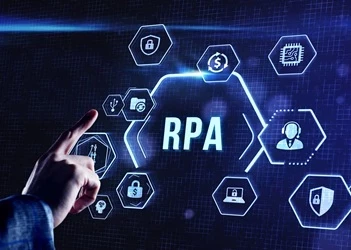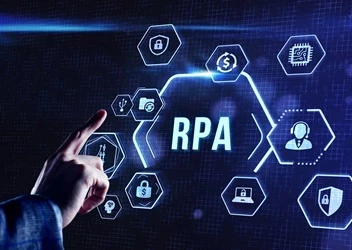OPEX Live 2018: Day One Summary
Add bookmarkOn the introduction...
We heard from Cathy Gu, producer of OPEX Week in Orlando to hear what she thinks the future of RPA will look like. 'Most industries are adopting autoimation - it's most effective in an environment where you have repetitive tasks in large quanities.'
Meanwhile, James Marrick-Potter of the Cabinet Office talks about the challenges of getting civil servants and politicians on board with the latest tech.
The introduction is avaliable as a standalone here.
The truth about RPA and getting to scale
Our webinar was hosted by Francis Carden, VP Robotics and Transformation at Pega. One of the original founders and CEO of OpenSpan, the worlds largest Robotic Automation and Workforce Intelligence company, was acquired by Pega Systems in 2016.
As he told me before we went live, he had 45 minutes to talk about something he's had 20 million minutes experience in. Few people have his long view of the industry, and he quickly told us that RPA was frequently being brought in to solve the wrong problem: 'What problem is RPA trying to solve? We keep piling on user interfsaces onto the desktop - and it's got to be too much.'
The listening audience was polled with the question: How many robots do you have in your organisation today?
36% of attendees had fewer than 10; 64% had not deployed any robots at all, and these, said Francis, were 'the lucky ones, becasue you'll be able to take advantage of the learning of the others.'
RPA doesn't solve the problems of underlying legacy systems
If you're just adding onto your legacy system, you're not going to set the world on fire, said Francis, comparing the addition of robots to 'a tax on your legacy systems... and it's NOT digital transformation.'
Looking at three different RPA integration methods, only 'injection' allows the users to work in real time without the delays of other apporaches - and there is a clear benefit to attended rather than unattended RPA. It is the difference between scaling quickly in a matter of weeks, and not scaling at all.
Don't put robots on top of your processes
Francis concluded with some findings from Forrester and McKinsey, offered us a tantalising glimpse of the no-code future, and warned against getting robots to do processes that should be fiundamentally changed or abandoned.
McKinsey: 'Taking an end to end view of the outcome... is better than applying a digital band-aid to a particular pain point.'
Low code is coming very close to using natutral language so that people can sit down and visualise how a process could work. 'When you caputre tobjectives, this is what it looks like:
Robots could generate an application for users without any code. We're not thetre yet but we are VERY close!
No code demo.
instead of looking at AI as a silo, you can't think it'll work if it isn't getting data.
Audience questions
We took a number of questions from the audience in the final miunutes of the webinatr including:
- Does the future belong to those who use it properly?
- What's the worst mistake you've seen?What signs do we need to see to assess the posibility that hidden legacy code exists?
- I'm interested in RPA at my organization but I fear resistance from my stakeholders. What do you recommend to address this?
- Can this integrate into the phone system, listen to the conversation between rep & customers & suggest answers?
- Where is the best place to start - what processes typically allow quick improvements and returns?
- Are the valuations of the 3 RPA companies UiPath, Automation Anywhere and Blue Prism totally inflated?




















